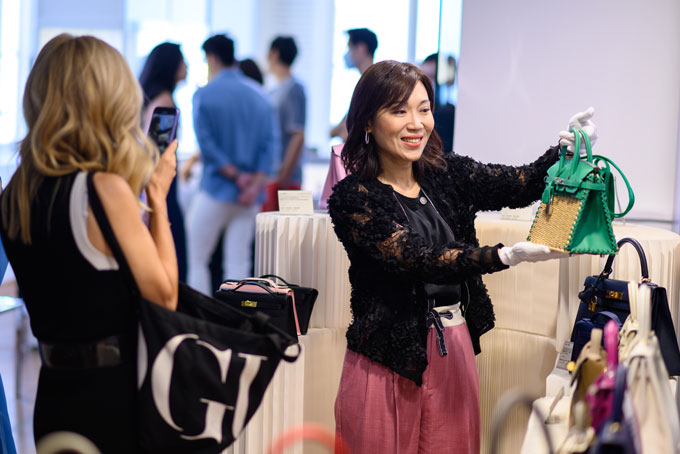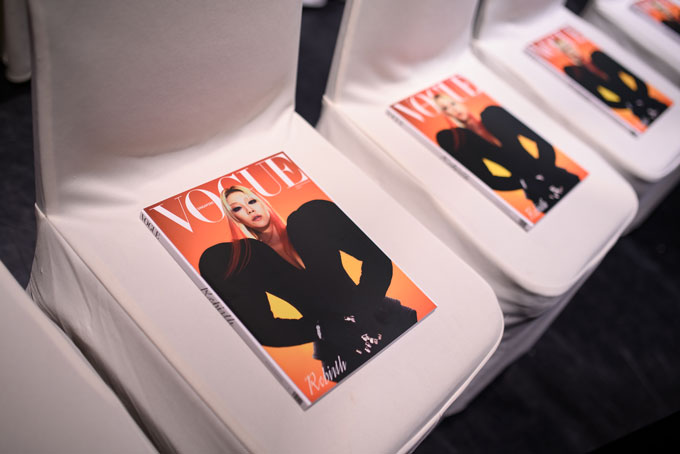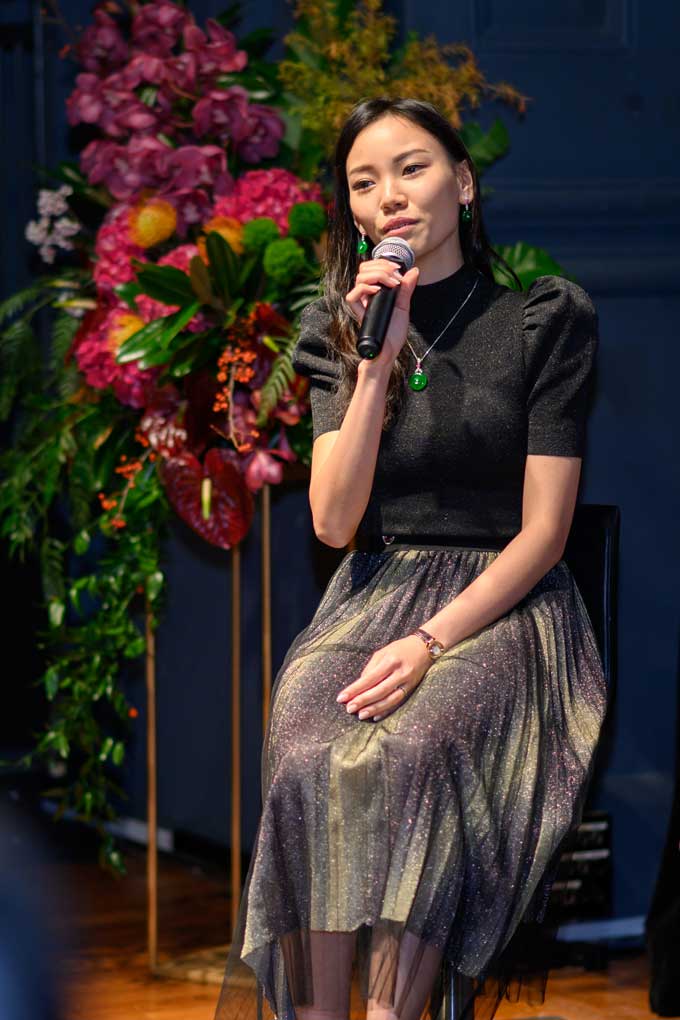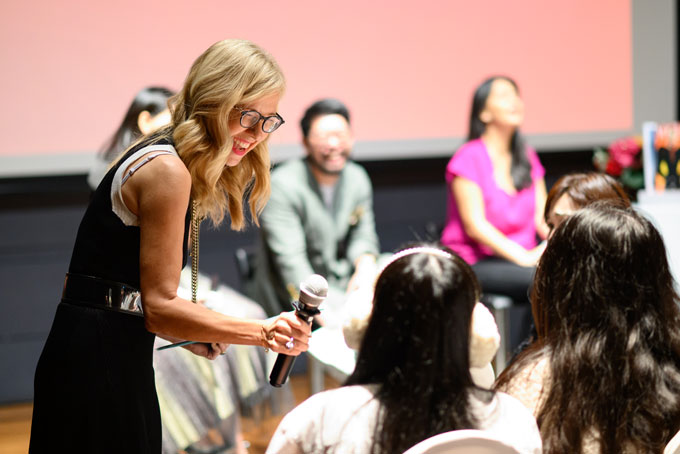Staged at The Arts House Singapore over the last weekend of October, Christie’s recent preview in nearly three years was an event Singaporeans will remember well for a very long time. Other than being an unprecedented cross-category showcase, it was the auction house’s largest exhibition since the pandemic. Headlining the event, along with top lots from its Magnificent Jewels, Vintage Watches, Handbags, Art, and Wine catalogues, was the first Tyrannosaurus rex skeleton ever to go under the hammer in Asia.
Towering over big crowds that gathered for a glimpse of it at the Victoria Theatre and Concert Hall, Shen the T-rex highlights Christie’s 20th/21st Century Art Evening Sale. It will go to the highest bidder on 30th November in Hong Kong to the highest bidder on 30th November.
But there were also a good number of jewellery and timepiece highlights to entice the luxury buyer. Among them, vintage and modern timepieces from renowned maisons such as Patek Philippe, Audemars Piguet, A. Lange & Söhne, and Vacheron Constantin, to name just a few. Meanwhile, jewellery enthusiasts were treated to some eye-wateringly fabulous pieces, from vintage Cartier and Van Cleef & Arpels to gemstones from the best gemstone mines such as Kashmir, Colombia, and Burma, further highlighting the largest ever sold pear-shaped Fancy Vivid Pink Type IIa, one-of-a-kind 18.18-carat diamond named the Fortune Pink.

Inter-generational collecting also extends to handbags especially in mother-daughter relationships. Christie’s head of handbags for Asia, Winsy Tsang, shares that this is where conversations between generations give younger collectors a share of voice when it comes to building a valuable collection within the family. The appreciation of craftsmanship, history, and quality is cherished from one generation to the next.

These spectacular objects and more inspired the latest Vogue Salon, organised in partnership with Christie’s, to consider the deeper questions behind Jewellery and Watches collecting. Through a panel discussion named “Beauty of Time: The Art of Collecting Heirlooms”, Vogue Singapore and Christie’s took the opportunity to consider the generational impact of collecting luxury objects that are perpetually valued.
Leading the panel are jewellery expert, Richa Goyal, who is also a journalist, author, and storyteller; timepiece expert and founder of the Singapore Watch Club, Tom Chng; and Christie’s jewellery junior specialist, Nicola Chan. Moderated by Vogue Singapore publisher Bettina von Schlippe, the discussion took place at the Art House’s Play Den, and was followed by a champagne reception for everyone.

Topics ranged from how to start a collection, to the emotional value of collecting, the definition of value in time- and jewellery pieces, how to evaluate a piece, and why we should all start our own legacy today. Here are all the highlights of the afternoon.
Vintage versus antique versus estate jewellery
The dialogue began with key questions that strengthen our foundational understanding of luxury jewellery and timepieces. What do people mean when they say vintage watches and jewellery? How is it different from antique watches and jewellery? And where does estate jewellery come in? Contrary to what some might think, these terms are not interchangeable in the least.

Antique jewellery, Richa Goyal shares, refers to pieces that are over 100 years old, while vintage are pieces that are generally less than 100 years old. She also adds that certified vintage often indicates that an object would have been “very well curated, of fine quality, an artisan piece with good quality gemstones, and all in all, a collectible piece.”
Meanwhile, estate jewellery is a term that often comes up in the US, used to describe all jewellery that’s pre-owned.

For anyone looking for golden opportunities here, Goyal also pointed out that as we’re in the 2020s now, the Art Deco period of the 1920s and early 30s and jewellery of its style will soon crossover into the antiques category. Word on the street is that now is the best time to collect something from the Art Deco era if value proposition is what drives you as a collector.
Why do we collect?
This question is relatively straightforward when it comes to jewellery. With timepieces, however, it remains a pertinent one since we’re surrounded by nothing but devices these days, and as Tom Chng quips, “even a microwave can give you the time.” So this means nobody needs a watch at all. And yet fine timepieces continually break auction records, blowing way past the million-dollar mark.

Throwing some clarity on this subject, Chng says, “When it comes to watches, it’s not a need but a want. Even among the super futuristic tech circles, everybody wants a piece of good craftsmanship. Of a perfection that’s so different from what we see every day.” As founder of the Singapore Watch Club (SWC), he is frequently in the company of watch collectors of all stripes and has also collaborated with several watch brands on special editions exclusive to SWC.

He adds, “[A mechanical watch] is the one object that functions independently from everything else. No matter where you go, that clear disconnect with tech is what’s going to make it more and more interesting.”
So where does value come in?
Collecting is an endeavour we often undertake with the aim of handing down something valuable and meaningful to the next generation. Whether it’s watches or jewellery, art or even handbags, savvy collectors train their eyes—and wallets—on iconic objects that not only tell a beautiful story but hold their value through the ages.
Yet it’s one thing to collect and quite another to build a collection that’s not just unique but also meaningful to your family. The same item can mean the world to someone just as it can have zero appeal to another.

“It depends from family to family,” says Christie’s Nicola Chan. “For instance, when you’re talking about pieces owned by royals, you don’t tend to focus on absolute value because good provenance can often take precedence above all.”
She also shares that obvious collecting trends in Asia is seen more and more in the recent years, but it is growing exponentially year on year. “Especially in just three generations,” she elaborates, “a wider range of people begin to understand and appreciate gemstones, and to consider the quality of jewels when they buy. That is why education to collecting luxury goods is key, and this is what we as specialists are here for.”
“[A mechanical watch] is the one object that functions independently from everything else. No matter where you go, that clear disconnect with tech is what’s going to make it more and more interesting.” – Tom Chng, founder of the Singapore Watch Club
For Chng, it’s all about lost art and techniques. Going into vintage timepieces is also very much about trying to recapture the moment of innovation that led to the creation of specific timepieces. “There can be many representations of value,” he states. “Monetary value, sentimental value, historical value, cultural value, horological value… All of these can determine if an object is valuable or not.”

Questions of value manifest very naturally in the jewellery world where rare gemstones and precious metals constitute the bulk of the vernacular. On this topic, Goyal highlights the accelerated rarity of untreated or minimally treated coloured gemstones in this age of technology and science. As a result, “old jewellery are like time capsules of their era and of those techniques,” says Goyal.
“If no one acquires them today, they will be melted down and repurposed. That’s the harsh reality of the jewellery trade.”
Learn more through Christie’s education
Amid the multitudes of do’s and don’ts in watch and jewellery collecting, many come naturally to those passionate enough about the subject. Ultimately, the ability to make informed purchases comes—predictably—from ensuring that one does his or her homework before swiping one’s credit card.

Honing a professional’s opinion however doesn’t happen overnight. Our three expert panellists have each spent years, if not decades, training their eyes and building a strong mental library of knowledge spanning all corners of the industry. There are no short cuts and the best way to grow as a collector is to attend more viewings, see and touch the pieces, wear them. Ask every question, listen to the answers, and extrapolate from them anything that’s new and interesting.
“Old jewellery are like time capsules of their era and of those techniques.” – Richa Goyal, jewellery expert
Look at the auction market. Parse through catalogues of past sales to get a sense of what sold well and for how much. This also happens to be a great way to spot market trends and chart them over time.

Those who are keen on a more immersive method of learning could consider Christie’s Education, which offers a range of programmes from short online seminars to full in-person and virtual courses to set you up nicely on the route to being a collector.
And it’s never too late to start, whether it’s a watch, a jewel or a handbag, because these objects are a continuation of you and your personality through generations.
“In time, everything will go up in value, as long as you go for quality,” Goyal expresses. “I always tell people, buy whatever your budget allows, but within that budget, always buy the best quality it allows.”





